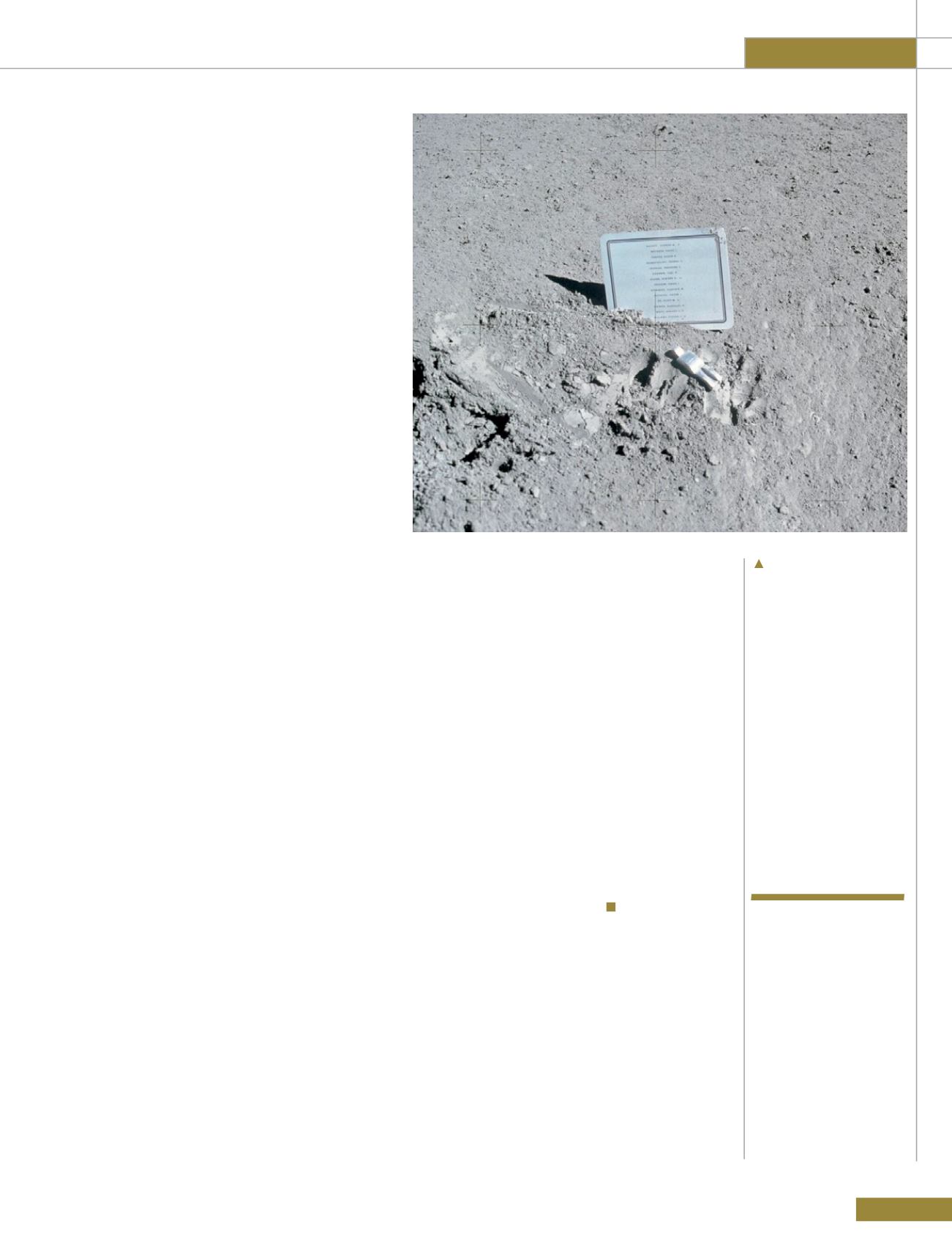
ROOM
93
Opinion
process by which property may be submitted for
inclusion in the World Heritage List. And it relies on
the concept of sovereignty, anathema to the Outer
Space Treaty. State Parties to the Convention are
instructed to submit properties within their territory.
But the Moon is the province of all humankind, not
subject to territorial claim by one State.
The Operational Guidelines do contemplate,
at Paragraphs 134 and 135, the nomination
of a “transboundary” property which should
be prepared and submitted by State Parties
jointly. The Moon can certainly be considered
a “transboundary property” that essentially has
“adjacent borders” with every State on Earth.
Which is to say that a nomination for inclusion of
the six Apollo landing sites on the World Heritage
List is unprecedented. It is also necessary.
The future of humanity in space promises
infinite possibilities. More and more countries are
becoming spacefaring nations and a new wave of
commercial space activities has given both states
and the private sector unique opportunities and
challenges to make history. And just as the Apollo
project was built on the foundation of centuries
of science and discovery from around the world,
these new endeavours are built upon the legacy
and lessons of those Moon landings.
To fully understand those lessons and the
sacrifices made by all the men and women who
have contributed to humanity’s quest to explore
space, we need to preserve the history and heritage
found in those first Moonsteps. Because they hold
not only the crumbs of our past, but enduring
expressions of hope for a peace-filled future.
Recognising that no one country can or should
spearhead the process to nominate a World
Heritage Site, For All Moonkind will organise
the nomination documents and carry out all
prepatory work with the hope and intent that all
States join, as transboundary participants, in the
ultimate nominating submission - a nomination
that will truly transcend the bounds of nations. We
must start to recognise that we are together one
species, with a shared goal, too often obscured, of
preservation, peace and goodwill.
If we cannot achieve peace on Earth, certainly
we can work together to preserve peace in the
heavens. And conserving the Apollo landing sites
as human accomplishments, protected by United
Nations decree, is a first step toward affirming
the universality of our shared posterity under a
unified regime.
Today, this may feel an overly symbolic gesture,
as the days of potential monument desecration
seem a distant horizon. But however symbolic it
may seem, it will assure that the base of a new
generation of competitive space exploration will
be founded in our shared humanity.
Humankind’s path to space started with a race
to put a human imprint on the “magnificent
desolation” of the Moon. But even in the midst of
that competition it was universally acknowledged
- as noted in the legislation that created the
United States’ National Aeronautical and Space
Administration - that “activities in space should
be devoted to peaceful purposes for the benefit
of all mankind.”
The Apollo astronauts left equipment, footprints
and numerous symbolic mementos on the Moon.
There is no doubt that these objects and these
sites are “so exceptional as to transcend national
boundaries and to be of common importance for
present and future generations of all humanity”.
They deserve to be preserved.
About the authors
Michelle L.D. Hanlon
is a co-founder of For All Moonkind, Inc. and a
founding partner of ABH Aerospace, LLC. She earned her JD magna cum
laude from the Georgetown University Law Center and a BA in Political
Science from Yale College. She has been in private practice for more
than 20 years. Focused on the relationship between law and emerging
and evolving technologies, she is currently pursuing an LLM in Air and
Space Law at McGill University.
Roy Balleste
is a member of the Advisory Council of For All Moonkind,
Inc. and a founding Partner of ABH Aerospace, LLC. A Professor of
Law and Law Library Director at St. Thomas University School of Law,
Miami Gardens, Florida, USA, he completed his doctorate degree (J.S.D.)
in Intercultural Human Rights (analyzing internet governance policy,
including its history, actors, and institutions). He is earning his LLM in
Air and Space Law from McGill University.
This plaque, left on the
Moon at the Apollo 15
landing site in August
1971, commemorates the
14 NASA astronauts and
USSR cosmonauts who
perished before the
mission. The tiny,
man-like object in front
represents the figure of a
fallen astronaut/
cosmonaut.
Conserving the
Apollo landing
sites as human
accomplish-
ments is a first
step toward
affirming the
universality
of our shared
posterity


